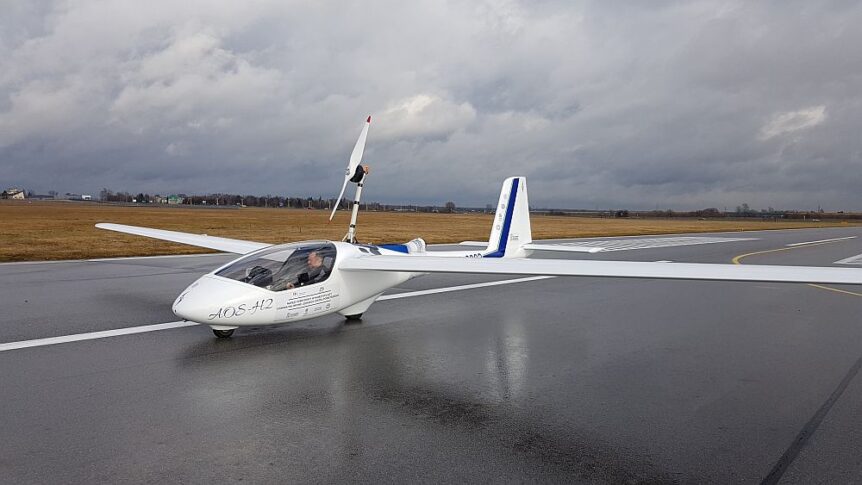A university in Poland has conceived, built and tested – but not flown, the AOS-H2, a hydrogen-powered motor glider. In 2013, the blog covered the test flights of a battery-powered electric two-seat motorglider designed at the Warsaw (Poland) University of Technology. Now, a similar design, the AOS-H2 has been crafted to fly on power generated by a hydrogen fuel cell. Early tests in 2020, “Confirmed that all units work correctly.” The “Hybrid Propulsion System Based on Hydrogen Fuel Cells in a Light Aircraft” is funded under the “Applied Research III” Program by the National Centre for Research and Development. Professor Marek Orkisz Ph.D., D. Sc., Eng. Of the Rzeszów University of Technology is Program Manager. As noted in the University’s announcement of the new airplane in 2020, “The last completed project was the AOS-71 motor glider fitted with an electric-powered propulsion system integrated in the fuselage and powered by lithium-polymer batteries in the wings.” At that time, Mike Friend, former …
First Polish Electric Motorglider
Michael Friend, Boeing Technology Director, met Maciej Kalwara a faculty member in mechanical engineering and aerodynamics from Rzeszow University, Poland at the 2012 ILA Berlin, or Berlin Air Show. Maciej showed him the AOS-71 electric motorglider – a first in Poland. The airplane made its initial test flights just weeks ago, perfectly according to the test pilot. A joint project between Rzeszow and Warsaw Universities of Technology and a derivation of the PW-6 tandem sailplane, the AOS-71 has a Sineton A30K016, 30 kilowatt (continuous power) motor. As shown in the video and pictures from Maciej, the flight looked smooth, lasted 20 minutes and achieved an altitude of 250 meters (820 feet). The airplane landed with 30 percent of its battery’s energy still available despite the climb and -17° C/-14° F temperature. Wind chill factor on wing runner must have been numbing An outgrowth of the Universities’ ultralight glider program, the 16.6 meter span sailplane has an empty weight of 385 …

